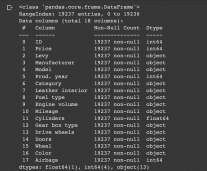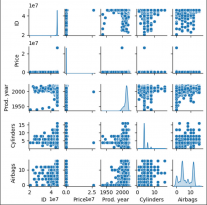针对上述问题,我们对训练集做了2项预处理来提高训练集与测试集分布的一致性:
平衡性采样;
场景数据正则化(缺失轨迹点插值,轨迹中心化以及随机旋转)。
此外,对于预测结果,我们也做了相应的后处理操作进行轨迹修正,主要是轨迹点的裁剪以及基于非极大值抑制的轨迹选择。图7展示了两个场景中行人的运动区域,可以看到有明显的边界,对于超出边界的轨迹,我们做了相应的修正,从而保证轨迹的合理性。

图7 训练轨迹的可视化
最后在训练技巧上,我们也使用K-Fold Cross Validation和Grid Search方法来做自适应的参数调优。最终在测试集上取得FDE 1.24米的性能,而获得比赛第二名的方法的FDE为1.30米。
五、总结
行人轨迹预测是当前一个非常热门的研究领域,随着越来越多的学者以及研究机构的参与,预测方法也在日益地进步与完善。美团无人配送团队也期待能与业界一起在该领域做出更多、更好的解决方案。幸运的是,这次竞赛的场景与我们美团无人配送的场景具备一定的相似性,所以我们相信未来它能够直接为业务赋能。目前,我们已经将该研究工作在竞赛中进行了测试,也验证了算法的性能,同时为该算法在业务中落地提供了一个很好的支撑。
参考资料
[1] Zhang P, Ouyang W, Zhang P, et al. Sr-lstm: State refinement for lstm towards pedestrian trajectory prediction[C]//Proceedings of the IEEE Conference on Computer Vision and Pattern Recognition. 2019: 12085-12094.
[2] Gupta A, Johnson J, Fei-Fei L, et al. Social gan: Socially acceptable trajectories with generative adversarial networks[C]//Proceedings of the IEEE Conference on Computer Vision and Pattern Recognition. 2018: 2255-2264.
[3] Sadeghian A, Kosaraju V, Sadeghian A, et al. Sophie: An attentive gan for predicting paths compliant to social and physical constraints[C]//Proceedings of the IEEE Conference on Computer Vision and Pattern Recognition. 2019: 1349-1358.
[4] Liang J, Jiang L, Niebles J C, et al. Peeking into the future: Predicting future person activities and locations in videos[C]//Proceedings of the IEEE Conference on Computer Vision and Pattern Recognition. 2019: 5725-5734.
[5] Zhu Y, Qian D, Ren D, et al. StarNet: Pedestrian trajectory prediction using deep neural network in star topology[C]//Proceedings of the IEEE/RSJ International Conference on Intelligent Robots and Systems. 2019: 8075-8080.
[6] Li X, Ying X, Chuah M C. GRIP: Graph-based interaction-aware trajectory prediction[C]//Proceedings of the IEEE Intelligent Transportation Systems Conference. IEEE, 2019: 3960-3966.
[7] Mohamed A, Qian K, Elhoseiny M, et al. Social-STGCNN: A Social spatio-temporal graph convolutional neural network for human trajectory prediction[J]. arXiv preprint arXiv:2002.11927, 2020.
[8] Huang Y, Bi H K, Li Z, et al. STGAT: Modeling spatial-temporal interactions for human trajectory prediction[C]//Proceedings of the IEEE International Conference on Computer Vision. 2019: 6272-6281.
[9] Gao J, Sun C, Zhao H, et al. VectorNet: Encoding HD maps and agent dynamics from vectorized representation[J]. arXiv preprint arXiv:2005.04259, 2020.
[10] Zhu Y, Ren D, Fan M, et al. Robust trajectory forecasting for multiple intelligent agents in dynamic scene[J]. arXiv preprint arXiv:2005.13133, 2020.

关于我“门”
将门是一家以专注于发掘、加速及投资技术驱动型创业公司的新型创投机构,旗下涵盖将门创新服务、将门技术社群以及将门创投基金。将门成立于2015年底,创始团队由微软创投在中国的创始团队原班人马构建而成,曾为微软优选和深度孵化了126家创新的技术型创业公司。
将门创新服务专注于使创新的技术落地于真正的应用场景,激活和实现全新的商业价值,服务于行业领先企业和技术创新型创业公司。
将门技术社群专注于帮助技术创新型的创业公司提供来自产、学、研、创领域的核心技术专家的技术分享和学习内容,使创新成为持续的核心竞争力。
将门创投基金专注于投资通过技术创新激活商业场景,实现商业价值的初创企业,关注技术领域包括机器智能、物联网、自然人机交互、企业计算。在近四年的时间里,将门创投基金已经投资了包括量化派、码隆科技、禾赛科技、宽拓科技、杉数科技、迪英加科技等数十家具有高成长潜力的技术型创业公司。









